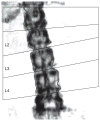Common mistakes in the clinical use of bone mineral density testing
- PMID: 18936788
- PMCID: PMC3891842
- DOI: 10.1038/ncprheum0928
Common mistakes in the clinical use of bone mineral density testing
Abstract
Bone mineral density (BMD) testing is used to diagnose osteoporosis, assess fracture risk and monitor changes in BMD over time. A variety of devices and technologies are used to measure BMD or other surrogate markers of bone strength. Measurements obtained with these devices are often reported according to different proprietary standards, and the comparability of values obtained with different instruments is often poor. In addition, there is a high degree of variability in the skills of the technologists performing the tests and the clinicians interpreting the results. Heterogeneity in the guidelines for using BMD measurements together with poor-quality BMD testing and reporting can result in inappropriate clinical decisions, causing unnecessary worry and expense for the patient and possible harm due to unnecessary treatment or treatment being withheld. This Review describes and discusses the mistakes commonly made in BMD testing, and emphasizes the importance of maintaining high-quality standards in order to optimize patient management.
Conflict of interest statement
The authors declared no competing interests.
Figures



References
-
- US Department of Health and Human Services. Bone health and osteoporosis: a report of the Surgeon General. Rockville, MD: US Department of Health and Human Services, Office of the Surgeon General; 2004.
-
- Shepherd JA, et al. Cross-calibration and minimum precision standards for dual-energy X-ray absorptiometry: the 2005 ISCD Official Positions. J Clin Densitom. 2006;9:31–36. - PubMed
-
- Bonnick SL, et al. Importance of precision in bone density measurements. J Clin Densitom. 2001;4:105–110. - PubMed
-
- Lewiecki EM, et al. DXA quality matters. J Clin Densitom. 2006;9:388–392. - PubMed
-
- Lewiecki EM. Update on bone density testing. Curr Osteoporos Rep. 2005;3:136–142. - PubMed
Publication types
MeSH terms
Grants and funding
LinkOut - more resources
Full Text Sources
Medical
